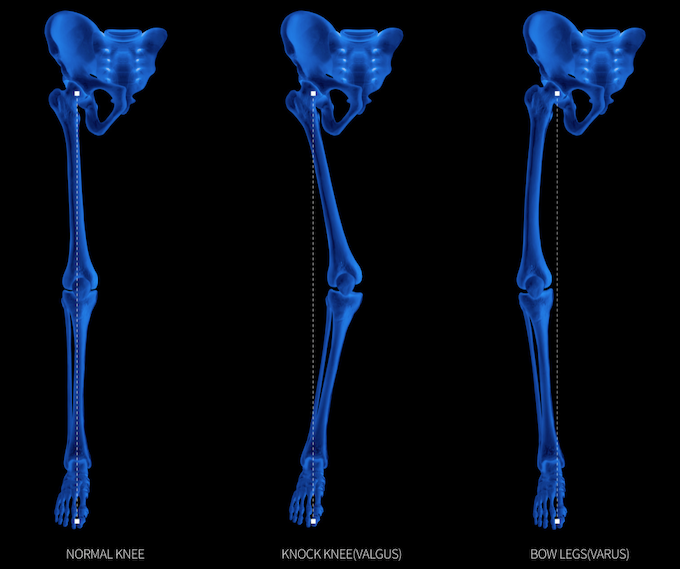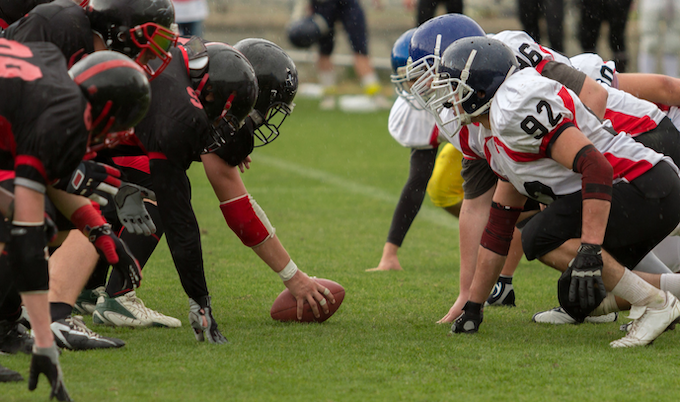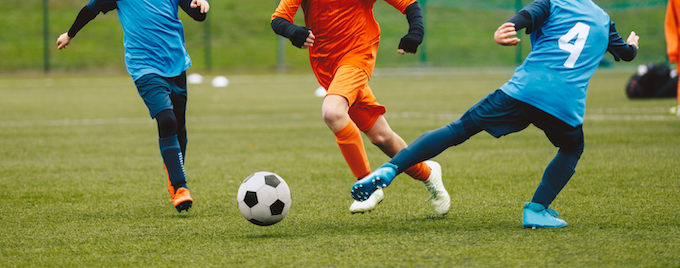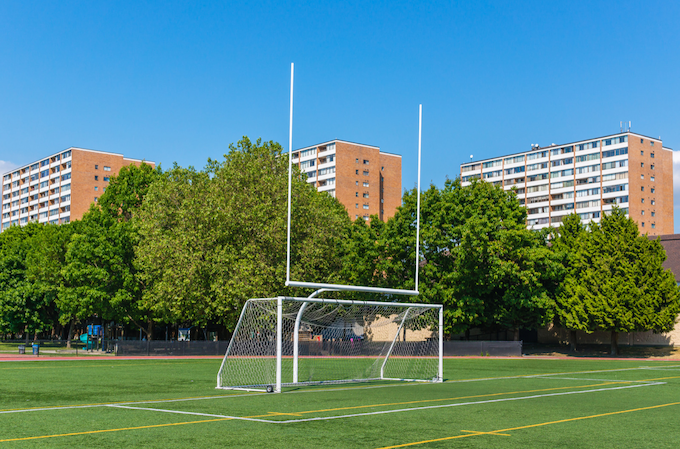The function of the ACL
The anterior cruciate ligament AKA the ACL is the most commonly ruptured ligament of the knee with half of all injuries occurring in individuals between the ages of 15-25 years.[7] The ACL is usually injured in high speed sporting activities.[7] To explain the most common mechanism of injury for the ACL, we must first look at the function of the ACL.
The ACL is located between the femur (which is the thigh bone) and the tibia (which is the shin bone) in the knee joint. The function of the ACL is to resist extension as well as extreme varus, valgus and rotation of the knee. Let's look into what this means. Extension of the knee can either be forward movement of the shin bone or backward movement of the femur. A valgus knee position is when your kneecaps are pointing inward, imagine trying to touch your knee caps together (image 1). A varus position is often referred to as a bow legged position, imagine what your knees would look like if you were riding a horse. Rotation is when your foot is planted and your knee turns inward or outward. With this in mind, any combination of these movements at high speeds would tear an ACL, because the ACL can be stretched beyond its physiological limit.[7]

Image by Kintarapong via Canva. Image #1 illustrates the right leg. The anterior cruciate ligament (ACL) resists extreme valgus and varus knee positions.
Mechanism of Injury
I know when I first learned about ACL tears, I thought that most injuries would come from an external force, like someone hitting your knee awkwardly. However, this isn’t the case, in fact approximately 70% of ACL sport related injuries are non-contact.[7] What are the common movements or mechanisms that tear the ACL? The most common way people tear their ACL is when they plant theiry foot on the ground and quickly change directions (also called a “plant and cut” in sports).[7] The deceleration required for the movement, combined with the turning of the knee when the foot is firmly planted puts the ACL in a vulnerable position. Other common mechanisms of a non-contact ACL injury include landing from a jump (in a valgus position), pivoting and twisting of the knee.[10]
What sports are high risk for ACL tears?
Keeping the common mechanism of an ACL tear in mind, any sport that combines high speed with rapid changes of direction are considered high risk sports. I will specifically discuss American football and soccer because these two sports have a very high incidence of ACL injuries.[2][5] A research study that looked at comparing ACL injuries in highschool athletes across the U.S found that soccer and football accounted for the most ACL tears for both boys and girls.[6]
Image by DAPA images via Canva. Football combines high speeds and change of direction. It is one of the most common sports in which ACL tears occur.
American Football
Football has all the movements that put your ACL at risk for tearing. You need to land after catching a high pass, you need to rapidly pivot and change directions to avoid defenders. There is also the risk of a contact ACL injury with football, and so you are at risk for both types of ACL injuries.[8] Out of offence, defence or special teams in American football, can you guess which one had the highest risk of ACL tears?
If you guessed special teams you are correct! Approximately 20% of all in-game ACL tears occur when special teams are on the field.[8] If you guessed offence (running back) like I did, that position comes in second for ACL tears.[8]

Image by matimix via Canva. In Soccer, the majority of ACL tears come from contact injuries when players are defending.
Soccer
ACL injuries are quite common in soccer, and injuries are more common in soccer than other sports.[9] In soccer, females have a 2-3x greater risk of tearing their ACL. The blog “Why female soccer players suffer more ACL injuries” explains the reasoning behind this. Surprisingly, research shows the majority of ACL injuries in soccer come from contact injuries when players are defending, with 46% of ACL tears resulting from tackling.[1][3] This is true for both males and females, with females still having a higher rate of ACL tears.[3] What about non-contact injuries? Well they still contribute to a significant amount of ACL tears in soccer. Around 82% of the time, non-contact injuries occur when an opponent is close by. This is most likely due to the changing of direction to avoid the defender.
Conclusion
One of the most common mechanisms contributing to an ACL tear is when you plant your foot on the ground and quickly change directions (also called a “plant and cut” in sports). Landing from a jump (in a valgus position), twisting and pivoting are also common mechanisms. Of all ACL injuries, 70% are non-contact injuries while 30% come from direct contact. Sports that require high speeds and rapid changes of direction are considered high risk sports, of which American football and soccer were discussed in this blog. In American football, special teams have the greatest risk of tearing their ACL. In soccer, ACL tears are commonly seen when a player is on defence. In both soccer and American football you have a risk of tearing your ACL from both non-contact and contact mechanisms. In soccer, the majority of ACL tears arise from contact injuries while performing a tackle.
For more information on ACL and ACL recovery you can download the Curovate App. Curovate is an online physical therapy app for ACL, knee replacement, or hip replacement recovery. It provides you with a personalized physical therapy plan with video guided exercises to complete throughout each stage of the healing process, all in the comfort of your own home. If you have suffered a sport related ACL injury, Curovate can help! We are proud to be one of the leading physical therapy apps available. Click the links below to download the app!
If you need further customized assistance during your surgery or injury recovery check out our Virtual Physical Therapy page to book your 1-on-1 video session with a physical therapist.
 |
 |
|---|
Other Related Blogs
- Why female soccer players suffer more ACL injuries
- What is an ACL and how is it injured?
- Turf leads to more ACL injuries-fact or fiction
- How to prevent ACL injuries
- Am I at risk of tearing my ACL? How can I prevent an ACL injury? How can I avoid a reinjury to my ACL?
References
2. Boden, B. P., Griffin, L. Y., & Garrett Jr, W. E. (2000). Etiology and prevention of noncontact ACL injury. The Physician and sportsmedicine, 28(4), 53-60.
3. Brophy, R. H., Stepan, J. G., Silvers, H. J., & Mandelbaum, B. R. (2015). Defending puts the anterior cruciate ligament at risk during soccer: a gender-based analysis. Sports health, 7(3), 244-249.
4. Dai, B., Mao, D., Garrett, W. E., & Yu, B. (2014). Anterior cruciate ligament injuries in soccer: Loading mechanisms, risk factors, and prevention programs. Journal of Sport and Health Science, 3(4), 299-306.
5. Evans, J., & Jl, N. (2018). Anterior cruciate ligament (ACL) knee injuries.
6. Joseph, A. M., Collins, C. L., Henke, N. M., Yard, E. E., Fields, S. K., & Comstock, R. D. (2013). A multisport epidemiologic comparison of anterior cruciate ligament injuries in high school athletics. Journal of athletic training, 48(6), 810-817.
8. Palmieri-Smith, R. M., Mack, C. D., Brophy, R. H., Owens, B. D., Herzog, M. M., Beynnon, B. D., ... & Wojtys, E. M. (2021). Epidemiology of Anterior Cruciate Ligament Tears in the National Football League. The American journal of sports medicine, 49(7), 1786-1793.







